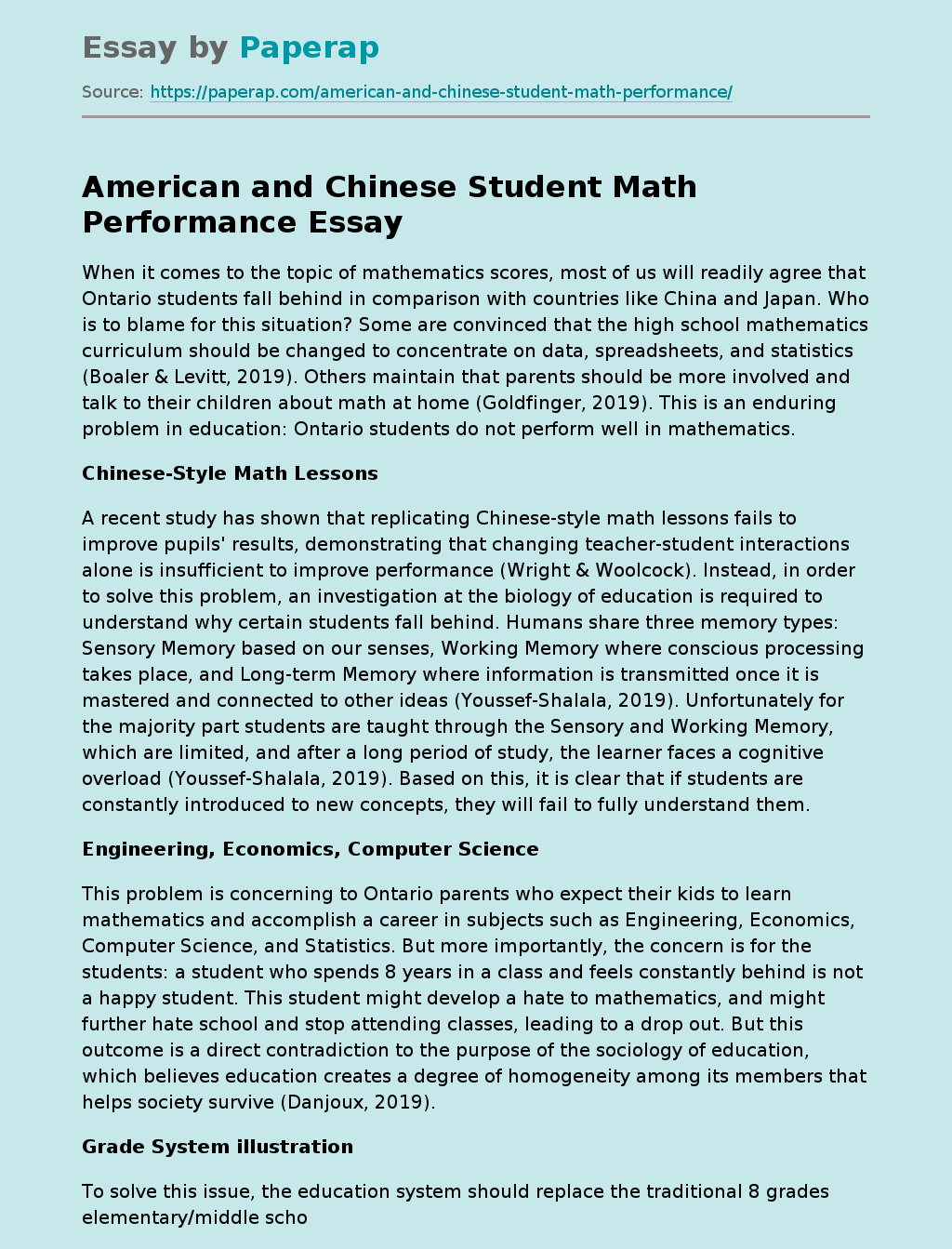American and Chinese Student Math Performance
When it comes to the topic of mathematics scores, most of us will readily agree that Ontario students fall behind in comparison with countries like China and Japan. Who is to blame for this situation? Some are convinced that the high school mathematics curriculum should be changed to concentrate on data, spreadsheets, and statistics (Boaler & Levitt, 2019). Others maintain that parents should be more involved and talk to their children about math at home (Goldfinger, 2019). This is an enduring problem in education: Ontario students do not perform well in mathematics.
Chinese-Style Math Lessons
A recent study has shown that replicating Chinese-style math lessons fails to improve pupils’ results, demonstrating that changing teacher-student interactions alone is insufficient to improve performance (Wright & Woolcock). Instead, in order to solve this problem, an investigation at the biology of education is required to understand why certain students fall behind. Humans share three memory types: Sensory Memory based on our senses, Working Memory where conscious processing takes place, and Long-term Memory where information is transmitted once it is mastered and connected to other ideas (Youssef-Shalala, 2019).
Unfortunately for the majority part students are taught through the Sensory and Working Memory, which are limited, and after a long period of study, the learner faces a cognitive overload (Youssef-Shalala, 2019). Based on this, it is clear that if students are constantly introduced to new concepts, they will fail to fully understand them.
Engineering, Economics, Computer Science
This problem is concerning to Ontario parents who expect their kids to learn mathematics and accomplish a career in subjects such as Engineering, Economics, Computer Science, and Statistics.
But more importantly, the concern is for the students: a student who spends 8 years in a class and feels constantly behind is not a happy student. This student might develop a hate to mathematics, and might further hate school and stop attending classes, leading to a drop out. But this outcome is a direct contradiction to the purpose of the sociology of education, which believes education creates a degree of homogeneity among its members that helps society survive (Danjoux, 2019).
Grade System illustration
To solve this issue, the education system should replace the traditional 8 grades elementary/middle school math curriculum with a system of 33 grades (8 years times 4 grades per year + 1 because students start at first year) as illustrated by Figure 1. Essentially, every half a year students who perform well jump a grade and continue following the normal stream, while students who meet only the basic competencies move to the next grade. For instance, if grade 1 is focused on ordering and adding numbers, grade 2 will cover the same concepts, and will move into Geometry and Spatial Sense. While grade 3 will cover the more complex concepts covered in today’s grade 1 system. This system recognizes that some students may need more time than others to appropriately digest a complicated field such as mathematics.
Therefore, this system will help students to stay on track and learn the principles of mathematics at their own pace rather than follow a pre-existing curriculum equivalent for all students.
American and Chinese Student Math Performance. (2021, Nov 11). Retrieved from https://paperap.com/american-and-chinese-student-math-performance/

